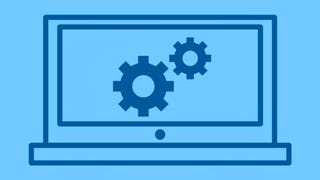The final course in the specialization Introduction to Programming in C will teach you powerful new programming techniques for interacting with the user and the system and dynamically allocating memory. You will learn more sophisticated uses for pointers, such as strings and multidimensional arrays, as well as how to write programs that read and write files and take input from the user. Learning about dynamic memory allocation will allow your programs to perform complex tasks that will be applied in the final part of the specialization project: a Monte Carlo simulation for calculating poker hand probabilities.

Enjoy unlimited growth with a year of Coursera Plus for $199 (regularly $399). Save now.

Interacting with the System and Managing Memory
This course is part of Introductory C Programming Specialization



Instructors: Andrew D. Hilton
25,127 already enrolled
Included with
(177 reviews)
Skills you'll gain
Details to know

Add to your LinkedIn profile
12 assignments
See how employees at top companies are mastering in-demand skills

Build your subject-matter expertise
- Learn new concepts from industry experts
- Gain a foundational understanding of a subject or tool
- Develop job-relevant skills with hands-on projects
- Earn a shareable career certificate

There are 4 modules in this course
So far, our programs have had a rather limited interaction with the user or rest of the system, printing some results to standard output (typically to the terminal). Now that we have learned about topics such as strings and arrays, we are ready to learn how to write a program that takes input from the user, takes arguments on the command line, accesses files, and does many other things we typically think of real programs as doing.
What's included
5 videos15 readings5 assignments4 programming assignments
So far, most of the memory we have used has been located on the stack. Dynamic memory allocation gives a programmer much more flexibility, in that it allows you to request a specific amount memory to be allocated on the heap, so that it will not disappear with the stack frame of the calling function.
What's included
7 videos18 readings5 assignments4 programming assignments
So far, we have focused exclusively on programming in the small—designing the algorithm for a small-sized task, implementing it, testing it, and debugging it. This module discusses three main differences that "real" programs exhibit. 1) They tend to be much larger than those we have written. 2) More than one person works on them, sometimes teams of hundreds to thousands. 3) Real software has a long life-span during which it must be maintained. Now that you have an understanding of the basics of programming in the small, we are ready to begin learning about programming in the large!
What's included
2 videos20 readings2 assignments3 programming assignments
In this module, you will complete the Poker Project! Now that you know about dynamic memory allocation, user input, and how to program in the large, you can write the final parts of the program. You will write code to read in a file with a hand of cards and code to choose unknown cards from a shuffled deck. As you program with more sophisticated data structures, the importance of drawing good pictures will increase. Happy programming!
What's included
1 video1 reading3 programming assignments
Earn a career certificate
Add this credential to your LinkedIn profile, resume, or CV. Share it on social media and in your performance review.
Instructors

Offered by
Explore more from Software Development
 Status: Free Trial
Status: Free TrialDartmouth College
 Status: Free Trial
Status: Free Trial Status: Free Trial
Status: Free TrialDuke University
 Status: Free Trial
Status: Free TrialDartmouth College
Why people choose Coursera for their career




Learner reviews
177 reviews
- 5 stars
65.16%
- 4 stars
15.73%
- 3 stars
8.42%
- 2 stars
1.68%
- 1 star
8.98%
Showing 3 of 177
Reviewed on Aug 2, 2019
i really loved the style of that course. the challenging assignments, depending more on reading and the continuous support through the discussion forums. i hope you make another extension to c++
Reviewed on Jun 13, 2021
It's very good for entering the world of progromming!
Reviewed on May 26, 2023
Well-structured course offering challenging coding projects and putting more emphasis on testing and debugging

Open new doors with Coursera Plus
Unlimited access to 10,000+ world-class courses, hands-on projects, and job-ready certificate programs - all included in your subscription
Advance your career with an online degree
Earn a degree from world-class universities - 100% online
Join over 3,400 global companies that choose Coursera for Business
Upskill your employees to excel in the digital economy
Frequently asked questions
No. Completion of a Coursera course does not earn you academic credit from Duke; therefore, Duke is not able to provide you with a university transcript. However, your electronic Certificate will be added to your Accomplishments page - from there, you can print your Certificate or add it to your LinkedIn profile.
To access the course materials, assignments and to earn a Certificate, you will need to purchase the Certificate experience when you enroll in a course. You can try a Free Trial instead, or apply for Financial Aid. The course may offer 'Full Course, No Certificate' instead. This option lets you see all course materials, submit required assessments, and get a final grade. This also means that you will not be able to purchase a Certificate experience.
When you enroll in the course, you get access to all of the courses in the Specialization, and you earn a certificate when you complete the work. Your electronic Certificate will be added to your Accomplishments page - from there, you can print your Certificate or add it to your LinkedIn profile.
More questions
Financial aid available,

